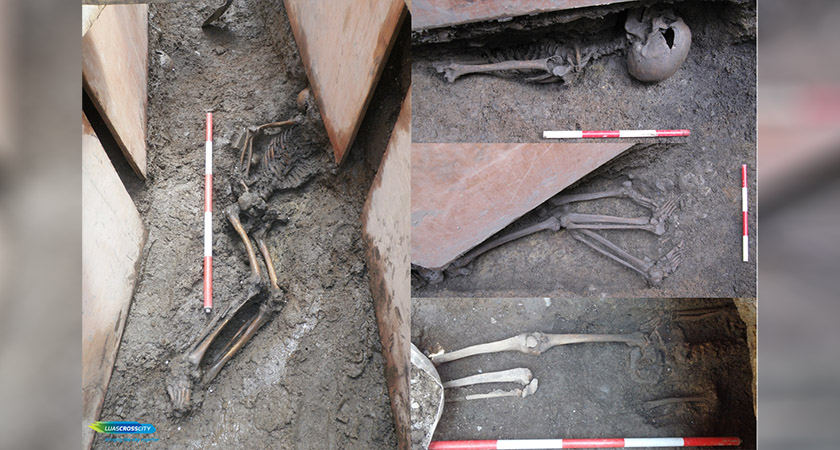THIS is what a man living in Dublin in or around the 16th century would have looked like, according to a new digital facial reconstruction.
The man, who was no older than 35 when he died, lay in a mass grave under what is now Dublin's College Green for more than 500 years – just north of the main entrance to Trinity College.
The recreation is a result of nearly three years worth of research involving a find of five human skeletons at the entrance to Trinity College Dublin in August 2014.
Precise radiocarbon dating suggests the individual grew up in Dublin during the Tudor period between 1485 and 1603, and was a poor man who spent much of his life doing manual work and suffered from the effects of malnutrition.
His remains were extremely well preserved which allowed scientists to build a digital image of his face using soft tissue and skin samples.
The remains were not buried in a formal graveyard, but were rather found in the area of the Hoggen Green, which was at the time one of Dublin’s three main commonages, where common folk reared their livestock.
 Five Tudor skeletons were discovered in burials at College Green, Dublin. (Picture: Rubicon Heritage)
Five Tudor skeletons were discovered in burials at College Green, Dublin. (Picture: Rubicon Heritage)That process was carried out by Professor Caroline Wilkinson and a team at Liverpool John Moore’s University, on behalf of Cork-based archaeology firm Rubicon Heritage – who discovered the skeletons.
By taking a 3D scan of the skull, they built up the facial muscles, soft tissue and skin. They were able to determine from samples taken from his teeth that he most likely lived all his life in Dublin.
The addition of a beard and long hair was based on drawings and paintings of what men tended to look like in the late 16th century.
According to Transport Infrastructure Ireland (TII) architect Rónán Swan, the remains of about 5,000 people have been found during road and rail excavation works in Ireland over the years, but few of the remains have been well preserved enough to allow for facial recognition.
“It is amazing after 500 years to come face-to-face with one of our ancestors,” he said.
“We have only had five or six skulls that have been found to be this well preserved in the past.”

